
Search Wild Foods Home Garden & Nature's Restaurant Websites:
Sheep's Sorrel
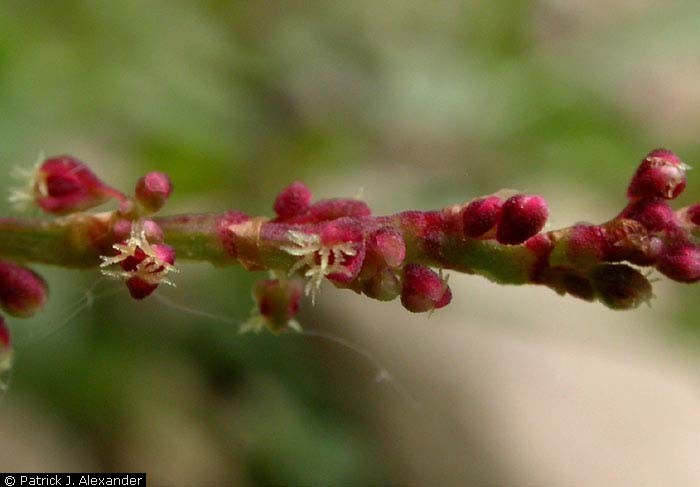
Sheep's Sorrel flowers up close. (Patrick J. Alexander, hosted by the USDA-NRCS PLANTS Database)
(NOTE: If you are not interested in growing Sheep's Sorrel, but just finding the plant and using it, try going to the Nature's Restaurant Online site Sheep's Sorrel page.)
Sheep's Sorrel (Rumex acetosella). Also known as: Field Sorrel, Red Sorrel, Sour Weed. Since this plant prefers acidic soils, the same conditions as Blueberries, if you know where there are Blueberries, you probably have this around somewhere in a spot where there is sufficient light.
Is the growing of this plant compatible with Natural farming, Ecoagriculture or Eco friendly agriculture, Ecological farming, Sustainable agriculture, Agroforestry or Agro-sylviculture and Permaculture: Once established, this perennial is perfect for Natural farming, no-till garden methods.
Seeds: If you find some in seed, you can gather the seeds and save them in a container. Often you can buy seeds for this plant.
Transplanting: If it does grow near where you live, transplanting it is probably the best way. Make sure you keep it watered every day until it is re-established in the container you are growing it in. Because it spread by roots, more often than not when you find it, there is an area of them. Just use a shovel and dig out a bucket full and take home.
Soil & Site: Not hard to grow if you have loose, loamy acidic soils. It needs regular moisture, but the soil itself must be well drained. If you do grow it in the right conditions, it will spread rapidly by the roots, so I advise growing this plant in a container. This plant should be used like an herb, so you don't need to grow a lot. You can make acidic soil by mixing in a lot of Pine or Spruce needles to the soil. And/or buy some gardening sulphur from a garden store and mix into the soil. Follow the instructions on the container for how much to mix in. Also, you can usually buy acidic soil bagged from most garden centers. Since this plant does not like hot, dry weather, growing in a container lets you move it out of hot spots in summer, and put it back in the sun in the spring and fall. Try find a place where it gets morning and evening sun in the summer, but is shaded during the heat of the day. Do not mix in fertilizer or composted manure - it actually does better in nutrient poor soils.
Planting: Just spread a few seeds on the prepared soil surface. Use your fingers to lightly rake the soil to work the seeds in, tamp down lightly and water. Keep the soil moist all the time, but especially when starting - don't let it dry out at all for two weeks. If transplanting just set the shovel full of dirt you got with it in a hole in the soil, firm in and water well until established.
Maintenance: Make sure you cut off the seed heads before the seeds are mature if you don't want it to spread everywhere. Other than that, keep it from drying out like any container grown plant. Again, don't fertilize or put composted manure on this plant - it has the advantage in nutrient poor soils.
Harvesting: Only harvest young, smaller leaves when the plant is actively growing - spring to early summer.
Using: This is a plant that should only be used in very small amounts as a flavoring, as it is high in oxalic acid. If used in small amounts as a flavoring, it does add a nice zest to the food taste. Young, finely chopped leaves are good in a salad, or put on top of a cooked meal.
Since only the young, smaller leaves are good for using, the best way of having it year round is to gather young leaves in the spring and dry and crush them into flake size you can use as a spice. You can use a food drier, or just on a pan in an oven on very low. Don't burn or cook them, just dry them. Keep as you would any spice like Parsley flakes.
Description:
- USDA Plant Hardiness Zone: 3-9 (More information on hardiness zones).
- Soil pH: 5.6-6.0
- Plant Size: Up to 1 meter (40 inches), but usually 10–40 cm (4 to 16 inches)
- Duration: Perennial
- Leaf Shape:Variable, Hastate (triangular with lobes sticking out on the bottom of the leaf by stem). If you turn a leaf that has the lobes on the base (not all do) on its side, it is shaped like a child's drawing of a goldfish.
- Leaf Phyllotaxis (Arrangement) on branch: Rosette of long stemmed basal leaves (leaves at the base). Leaves on stem leaves alternate
- Leaf Size: basal leaf (leaves from base of plant) are around 7.5 cm (3 inches) long and 2.5 cm (1 inch) wide including their stem which accounts for about half the length. Leaves from the flowering stalks are much smaller - usually 2.5 cm (1 inch) long or less.
- Leaf Margin: Entire (smooth, no sawtooth). Lobes at base of leaf are rounded.
- Leaf Notes: Not counting the lobes at the base, the leaf is widest about 2/3 towards the tip of the leaf.
- Flowers: On the stalk, near the top in clusters along the stem, very small. Male plants have light yellow flowers (can have greenish hue), while female plants have reddish-maroon flowers.
- Fruit: Small, reddish-tan achene
- Habitat: Likes open areas with full sun. Grasslands, meadows, disturbed lands, damp but not wet soil near rivers, dry disturbed land. Likes acidic soils, but not common in calcium rich soils (calcareous) such as where there is limestone bedrock close to the surface.
Web Resources:
- Recipe search on the web here (Google search) and here (Bing search).
- Pictures on the web here (Google images) and here (Bing images).
- Interactive USDA distribution map and plant profile here.
- The Biota of North America Program (BONAP) distribution map here. BONAP map color key here.
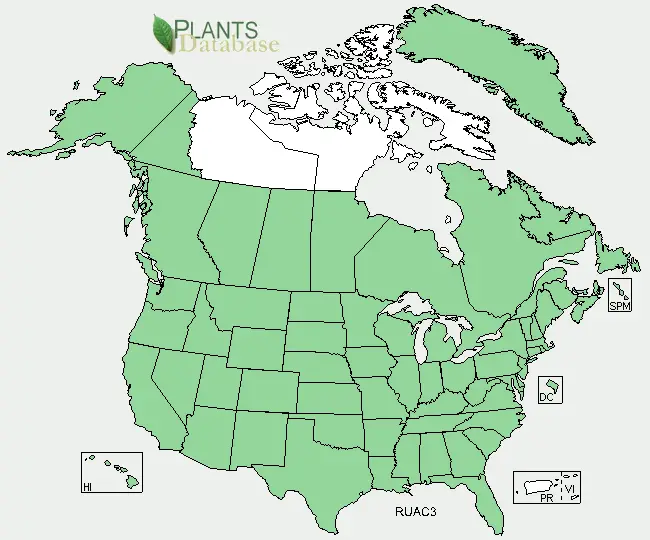
Sheep's Sorrel (Rumex acetosella) range. Distribution map courtesy of U. S. Department of Agriculture (USDA Natural Resources Service) and used in accordance with their policies.
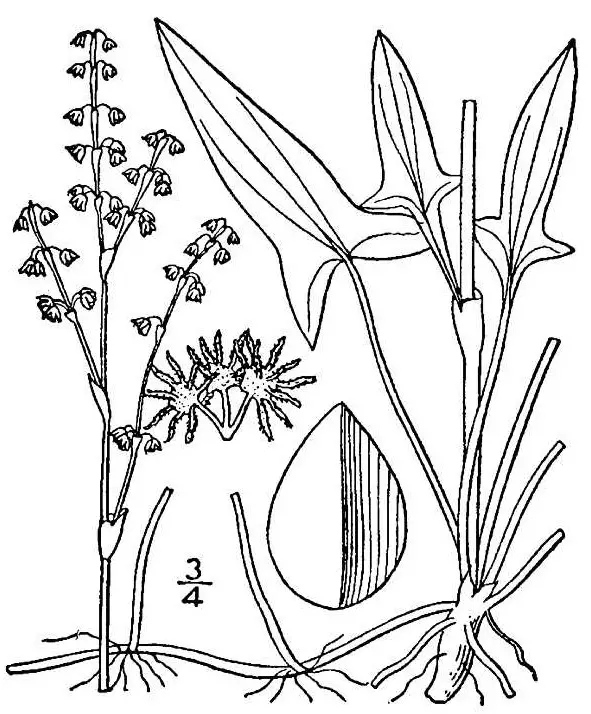
Sheep's Sorrel drawing. (USDA-NRCS PLANTS Database / Britton, N.L., and A. Brown. 1913. An illustrated flora of the northern United States, Canada and the British Possessions. 3 vols. Charles Scribner's Sons, New York. Vol. 1: 653)
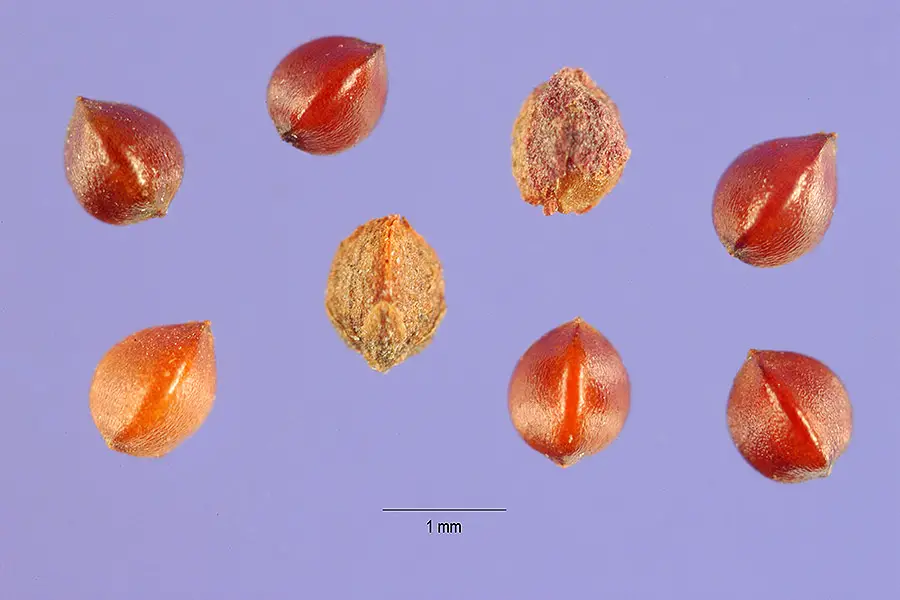
Sheep's Sorrel seeds. (Steve Hurst, hosted by the USDA-NRCS PLANTS Database)
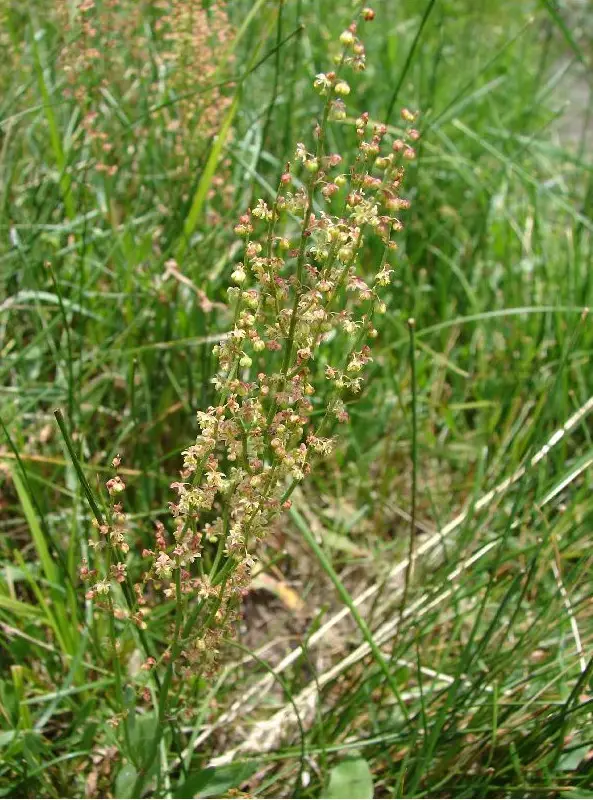
Sheep's Sorrel inflorescence. Note that the color can range from what you see here to redish in other pictures on this page. (Sheri Hagwood, hosted by the USDA-NRCS PLANTS Database)
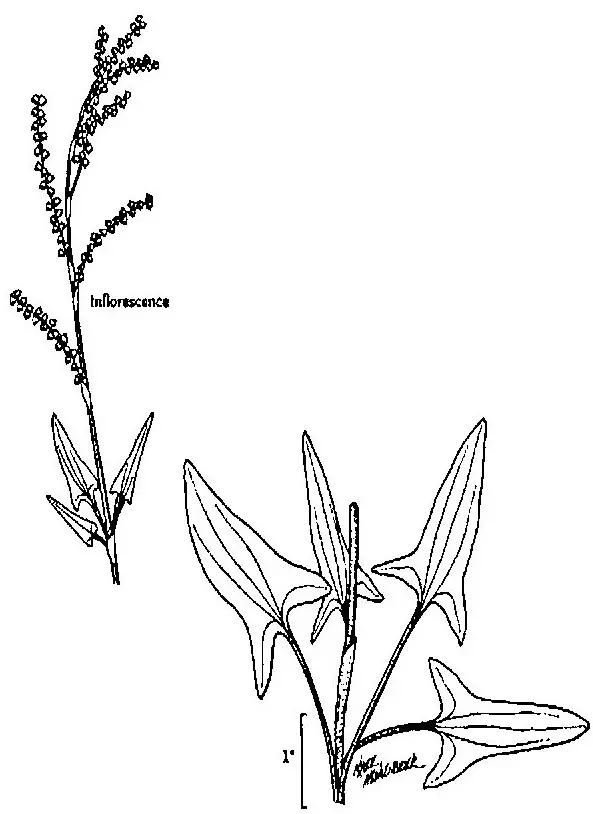
Sheep's Sorrel drawing. (USDA-NRCS PLANTS Database / USDA NRCS. Wetland flora: Field office illustrated guide to plant species. USDA Natural Resources Conservation Service)
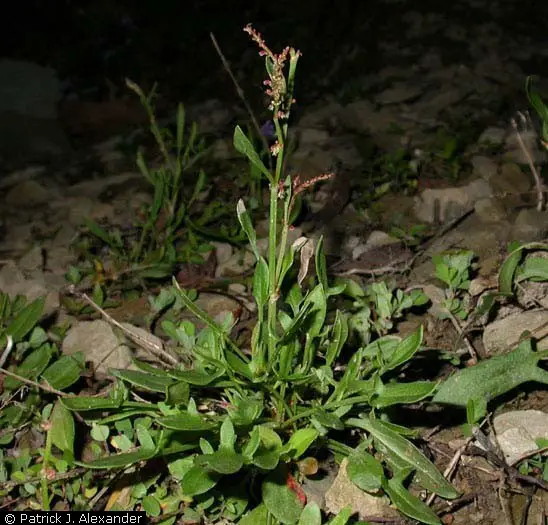
Sheep's Sorrel. Note the range of shapes and colors the plant can take. (Patrick J. Alexander, hosted by the USDA-NRCS PLANTS Database)
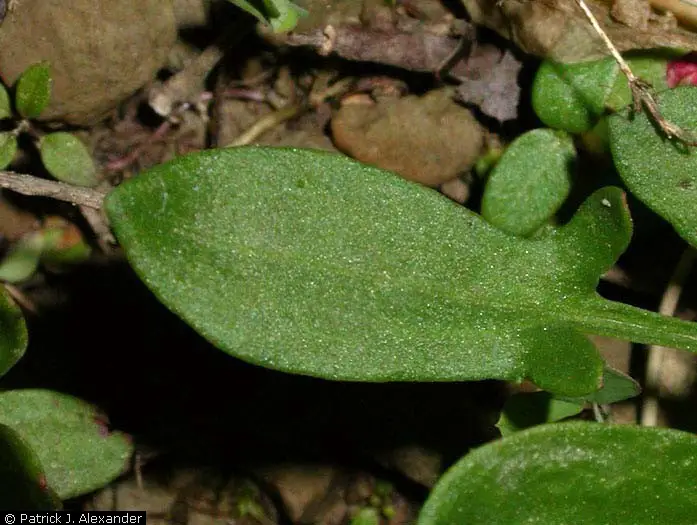
Sheep's Sorrel leaf. Note the unique shape of the leaf base. (Patrick J. Alexander, hosted by the USDA-NRCS PLANTS Database)
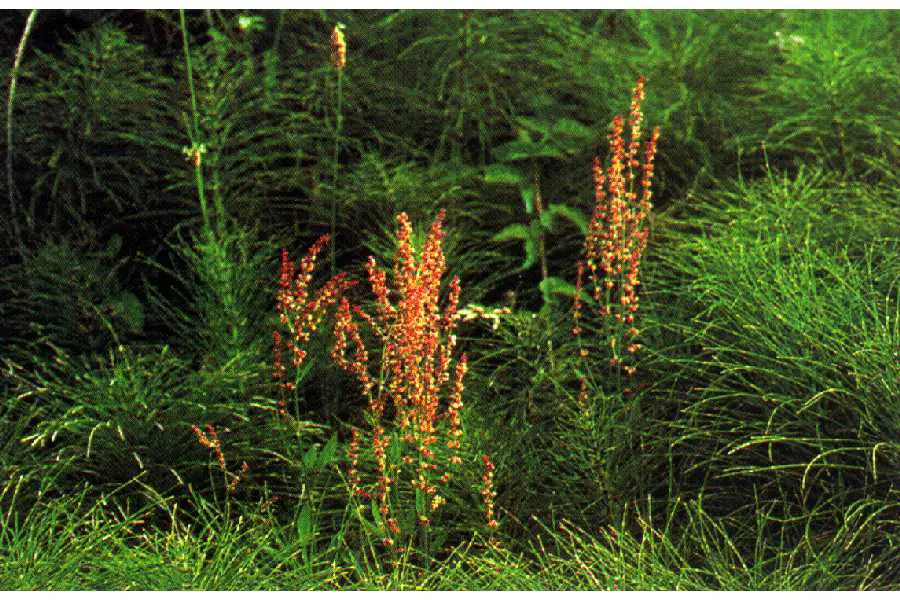
Sheep's Sorrel. (Robert H. Mohlenbrock, hosted by the USDA-NRCS PLANTS Database / USDA NRCS. 1992. Western wetland flora: Field office guide to plant species. West Region, Sacramento.)
Search Wild Foods Home Garden & Nature's Restaurant Websites:
Share:
Why does this site have ads?
Originally the content in this site was a book that was sold through Amazon worldwide. However, I wanted the information to available to everyone free of charge, so I made this website. The ads on the site help cover the cost of maintaining the site and keeping it available.
Google + profile
